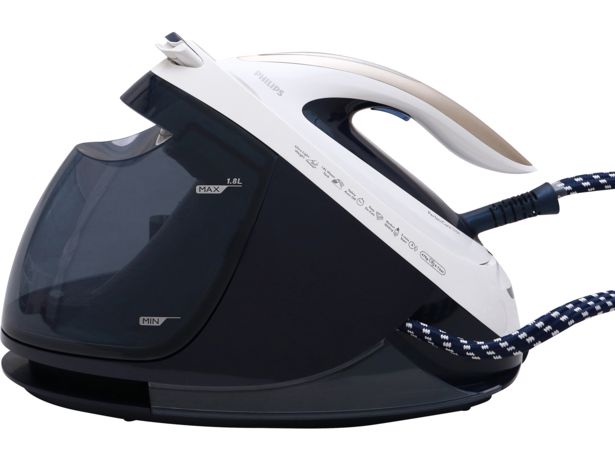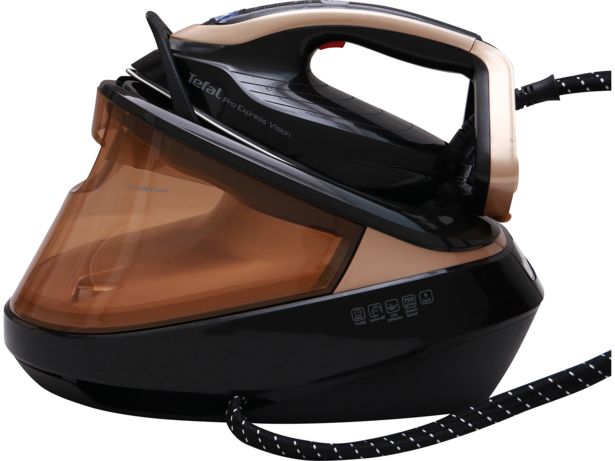How to iron your clothes

If you're faced with a mountain of crumpled clothes, don't despair. We've pulled together expert advice to make ironing less of a chore.
We've got tips on how to iron a shirt, the best settings for different fabrics, whether you should use ironing water, and what the symbols on care labels actually mean.
And of course, a decent iron helps. Which? members can view all our steam iron reviews and discover our pick of the best steam irons.
Get inspired to make home improvements. Sign up for our Home newsletter – it's free monthly
Video: how to iron a shirt
Follow these tips to get perfect results when ironing a cotton shirt:
- Ideally, iron your shirt while it's still damp. If it's dry, use the spray function on the iron
- Select the highest setting, or the cotton feature, then give your iron time to get up to temperature
- Start with the collar, ironing from the pointy bits inwards
- Then iron the cuffs, doing the insides, then the outsides
- Next, iron the shoulders – iron from the outside of the board inwards
- Iron the back of the shirt, then the front, using pressure on the placket (the fabric around the buttonholes)
- Use the tip of the iron to press between the buttons
- Lastly, iron the sleeves, using the seams to make sure they lay flat
- And there you have it – one crisp, freshly ironed shirt!
To find out which type of laundry detergent is best for getting whites extra bright, read our guide to the best washing powders and laundry detergents
Before you start ironing
If you want to get ahead of the game, here are four things to do before you start ironing:
- Get a good iron The best irons heat up quickly and remove creases with ease, but the same can't be said for all models – some make ironing even more of a chore. Our steam iron reviews weed out the duds.
- Don't overload your washing machine This can cause clothes to crease. Make ironing easier by leaving plenty of room for clothes to tumble around in the washing machine or dryer.
- Adjust your ironing board Too high and you won't get enough force on the iron; too low and you'll get backache. If you've outgrown your board, read our reviews of the best ironing boards.
- Check the care labels Some clothes can't be ironed, so it's best to find out before you start ironing (and end up scorching them) while others require a press cloth – such as a clean cotton tea towel – to protect them from direct heat. If you aren't sure what the symbols on the care label mean, check out our ironing symbols guide below.
Ironing symbols explained

Get to grips with your laundry labels – read our FREE guides to washing machine symbols and tumble dryer symbols
Should you use ironing water?
Ironing water ranges from a couple of pounds to more than £20 per bottle.
According to ironing water manufacturers, it prevents limescale build-up, makes stubborn creases easier to shift and leaves fabrics smelling extra-fresh.
However, you can manage just fine without it. In fact, lots of ironing brands advise against using ironing water.
Tefal told us: 'Scented or treated water can damage your iron or generator, as the chemicals leave residue, which can damage seals and moving parts.
'Treated water can also have a higher boiling point, which can result in incomplete steam generation.’
Philips recommends using a combination of tap water and distilled water to prevent limescale build-up.

Ironing tips
The moment you've been putting off has finally arrived: there's a Kilimanjaro-sized pile of laundry staring at you, and you don't know where to begin.
Here's what to do:
- Iron clothes while they're damp It's easier to remove creases while clothes are damp, although there are some exceptions (see our advice on ironing different fabrics below). Spray on a little water if they're already dry.
- Separate fabrics by type Rather than reaching for whatever's at the top of the pile, separate your clothes into different fabrics so you don't have to fiddle with the settings.
- Let the iron heat up If you've increased the temperature, make sure you give the iron enough time to heat up or you needn't have bothered adjusting the thermostat. Similarly, allow the iron to cool if you've turned the temperature down.
- Stroke, don't wiggle Wiggling can stretch the fabric, so it's best to stick long, straight strokes when ironing along them.
- Hang or fold clothes straightaway If you've gone to the effort of ironing, you might as well keep your clothes crease-free. Have a pile of hangers next to the ironing board – or iron beside your wardrobe, so you can hang them up straightaway.
- If you don't have an iron... hang clothes in a steamy bathroom. This won't give you the same crispness as ironing, but your clothes will be a little less wrinkled than before.

Ironing different fabrics
Careless ironing could ruin your favourite silk blouse or linen trousers. Here's how to iron different fabrics such as cashmere, denim and silk without damaging them:
| Type of fabric | What you should do |
| Acetate | Acetate is a synthetic fabric made from cellulose or wood pulp. It's often used for wedding dresses and occasion wear. You should iron it inside out on a low heat. |
| Acrylic | This man-made fibre is often used for jumpers, socks and hats. You should cover acrylic with a press cloth before ironing. Use the lowest temperature setting and press down gently, rather than moving it back and forth. Iron acrylic when it's completely dry, or you might stretch it. Don't use steam. |
| Cashmere | Cashmere comes from goat wool. Often used for jumpers and scarves, it's finer and softer than sheep wool. You don't normally need to iron cashmere. Instead, smooth it out on a flat surface and leave it to air dry. If it's still wrinkled after drying, iron on a low heat. Move in gentle strokes, never lingering on any one spot. |
| Corduroy | You should iron it inside out on a low temperature setting. Use as much steam as necessary. After ironing, brush down in the direction of the pile. This helps corduroy keep its distinctive texture. |
| Cotton and cotton blends | Whether you're ironing bedsheets or clothes, it's best to iron cotton while it's still damp. Iron on a high heat and use lots of steam. Some cotton blends need less heat, so check the care label for instructions. |
| Denim | Denim is a tough fabric, so use the highest steam and temperature settings. Press firmly and use the steam burst function (if your iron has one) to eliminate stubborn creases. |
| Embroidery and lace | Vintage clothes and accessories are back in vogue, but they need special care. Iron embroidery and lace face down, with a press cloth on top. If you're not sure which side is the back, look for small tails of loose thread. Use the lowest temperature setting and press down gently, being careful not to pull the stitching. |
After you finish ironing
Before you put your iron back in the cleaning cupboard, here are three things you should do:
- Let the iron cool down Never carry a hot iron around your home. Unplug it and wait – irons usually take 45-60 minutes to cool down.
- Drain the water tank You should drain the tank after each use. Stagnant water allows limescale to form, which can clog the steam ducts and make the iron less effective.
- Clean the iron Most irons come with a self-clean function. The instructions manual should tell you how often to initiate it – if you live in a hard water area, you might need to initiate it even more often.

For more advice on caring for your iron, read our FREE guide on how to clean an iron


